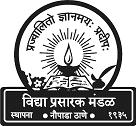HEART ATTACK SYMPTOMS IN WOMEN
- ARE THEY DIFFERENT?
Chest pain
is still the most common sign of a heart attack for most women, although
studies have shown that women are more likely than men to have symptoms
other than chest pain or discomfort when experiencing a heart attack
or other form of acute coronary syndrome (ACS), according to an article
"Symptom Presentation of Women With Acute Coronary Syndromes --
Myth vs. Reality" published online Dec. 10 in the Archives of Internal
Medicine. The study was funded by the National Heart, Lung, and Blood
Institute (NHLBI) of the National Institutes of Health.
Researchers
examined 35 years of research that yielded 69 studies 69 studies and
found that, depending on the size of the study (which ranged from large
trials to single centers and interviews), between 30 percent and 37
percent of women did not have chest discomfort during a heart attack.
In contrast, 17 percent to 27 percent of men did not experience chest
discomfort. Overall, the majority of women -- and men -- in the reviewed
studies had chest discomfort with heart attack (two-thirds to three-quarters,
depending on study size).
Study authors
also found that older people are more likely to have heart attack without
chest discomfort. However, because women are on average nearly a decade
older than men at the time of their initial heart attack, the researchers
call for more studies to determine the degree to which gender independently
influences heart attack symptoms.
They conclude
that current research does not indicate a need to differentiate heart
attack symptoms in women from those in men, and public health messages
should continue to emphasize chest pain or discomfort, shortness of
breath, and other common signs of heart attack. Coronary heart disease
is the leading cause of death among U.S. women, and affects one in 10
women over the age of 18.
The authors
also report that women are more likely than men to experience other
forms of cardiac chest pain syndromes, such as unstable angina, and
they appear to report a wider range of symptoms associated with ACS.
For example, women are more likely to report pain in the middle or upper
back, neck, or jaw; shortness of breath; nausea or vomiting; indigestion;
loss of appetite; weakness or fatigue; cough; dizziness; and palpitations.
Absence
of chest discomfort is a strong predictor for missed diagnosis and treatment
delays. Noting that many studies exclude patients who do not report
chest pain, the researchers call for additional research from well-designed
studies to further investigate gender differences in heart attack symptoms.
This includes expanding symptom definitions and greater standardization
in data collection and reporting of women's symptoms.
Study co-author
George Sopko, M.D., Medical Officer with NHLBI's Division of Cardiovascular
Diseases, is available for comment. To schedule interviews, contact
the NHLBI Communications Office at 301-496-4236 or at <nhlbi_news@nhlbi.nih.gov>.
RESOURCES:
-- Act In Time To Heart Attack Signs is an NHLBI education campaign
that that urges physicians to educate their patients about heart attack
risk, warning signs, and survival. For information on heart attack warning
signs for both the public and health care professionals, <http://www.nhlbi.nih.gov/actintime/haws/haws.htm>.
-- The Heart Truth, NHLBI's national awareness campaign for women about
heart disease, aims to spread the word that heart disease is largely
preventable. For midlife women, the most common risk factors for heart
disease in order of greatest prevalence include overweight/obesity,
high blood cholesterol, diabetes, and high blood pressure. For more
on The Heart Truth, <http://www.hearttruth.gov>.
-- For current recommendations for heart health, see Your Guide to a
Healthy Heart, <http://www.nhlbi.nih.gov/health/public/heart/other/your_guide/healthyheart.htm>.
